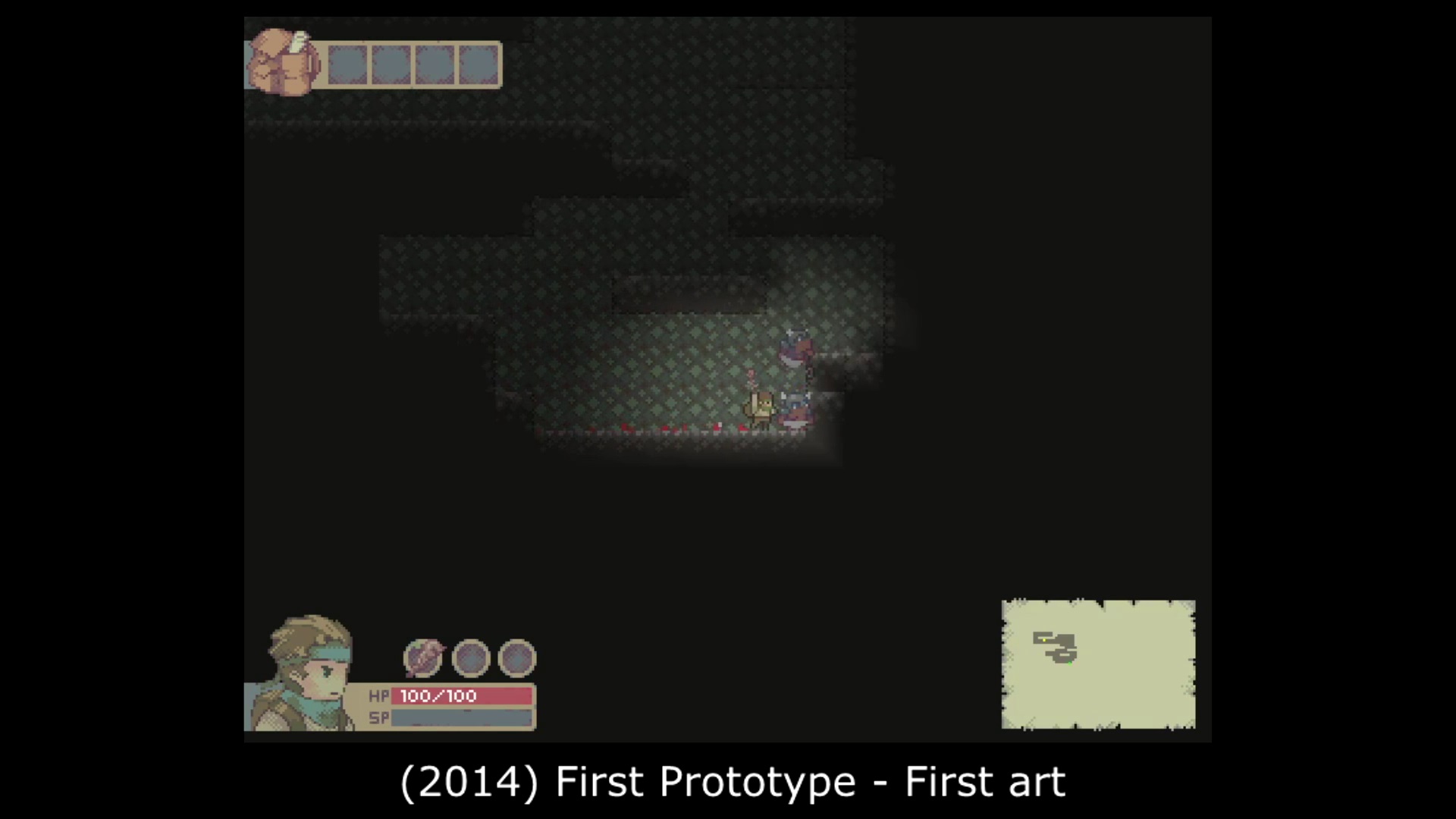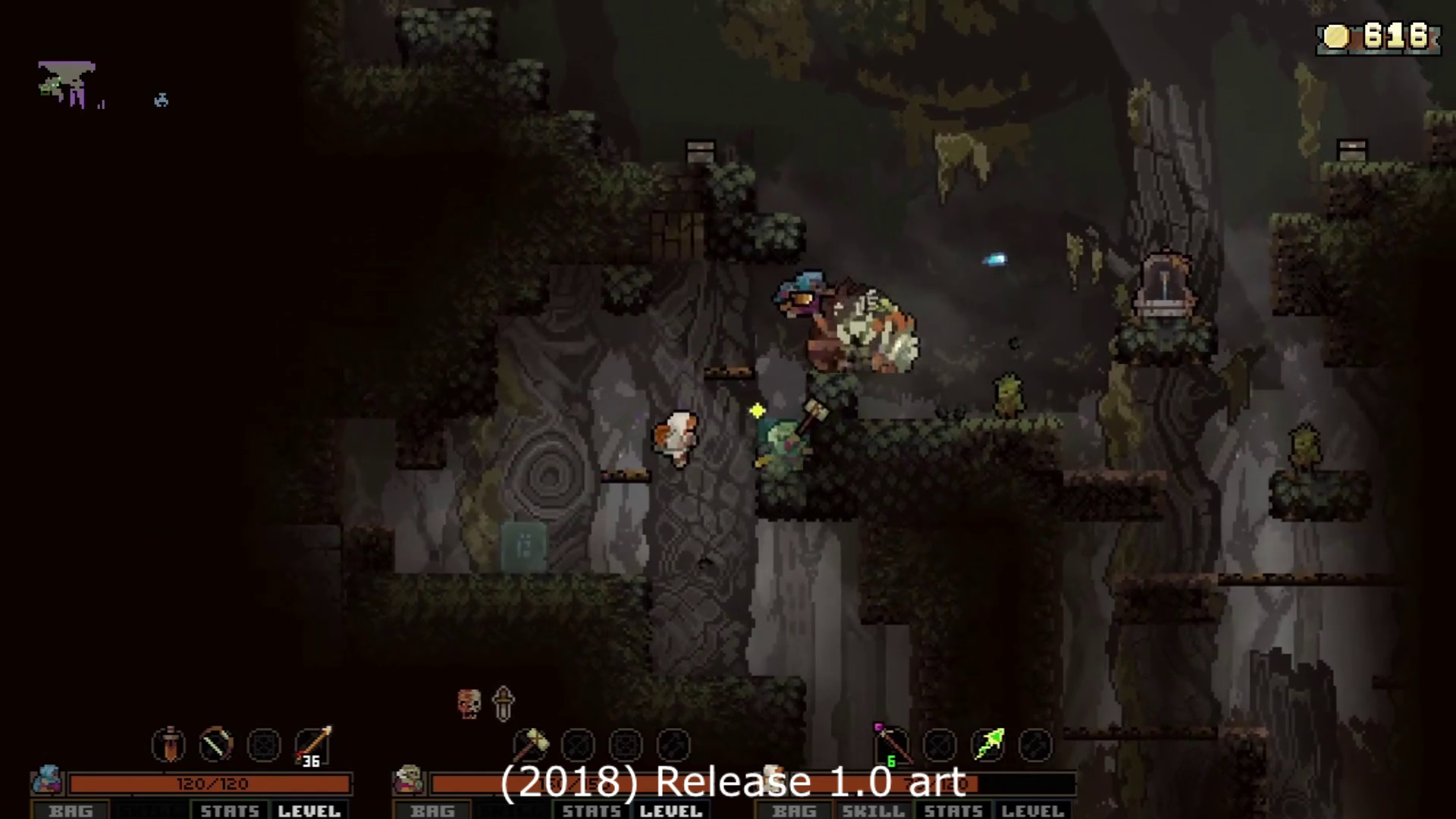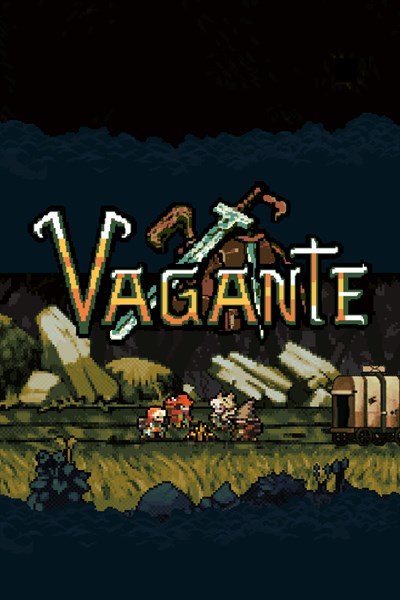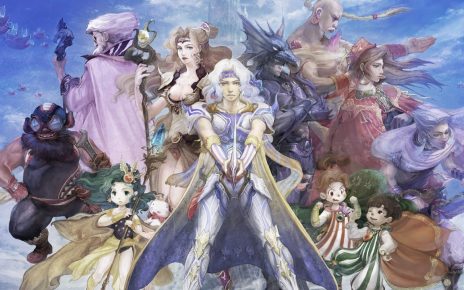Summary
- Roguelite combat-based indie game Vagante releasing on Xbox on January 27
- Learn about the inspirations behind the game and how it evolved in its own way
- Insights about the game mechanics and progression system
I am Eugene Paik, co-Founder of Nuke Nine, developers of Vagante, which is a pixelart platformer roguelite game that has been in development for five years and is out right now on Xbox consoles, so I wanted to tell you more about it in this blog post, particularly focusing on the creative influences and the game mechanics.
The Inspirations behind Vagante
Two of my personal biggest influences to making Vagante were Dungeon Crawl Stone Soup (DCSS), and of course, Spelunky. DCSS was the first real roguelike I enjoyed, and it’s still my favorite. It has deep and meaningful character choices, a breadth of combat mechanics, and the gameplay is a lot more streamlined and balanced than other roguelikes I’ve tried. Just some of the mechanics inspired by DCSS and classic roguelikes in our game include the class system, many of the items (randarts, scrolls, potions, wands, etc.), the inclusion of God Shrines, and the collectible Rune Orbs found in the game’s branch areas.
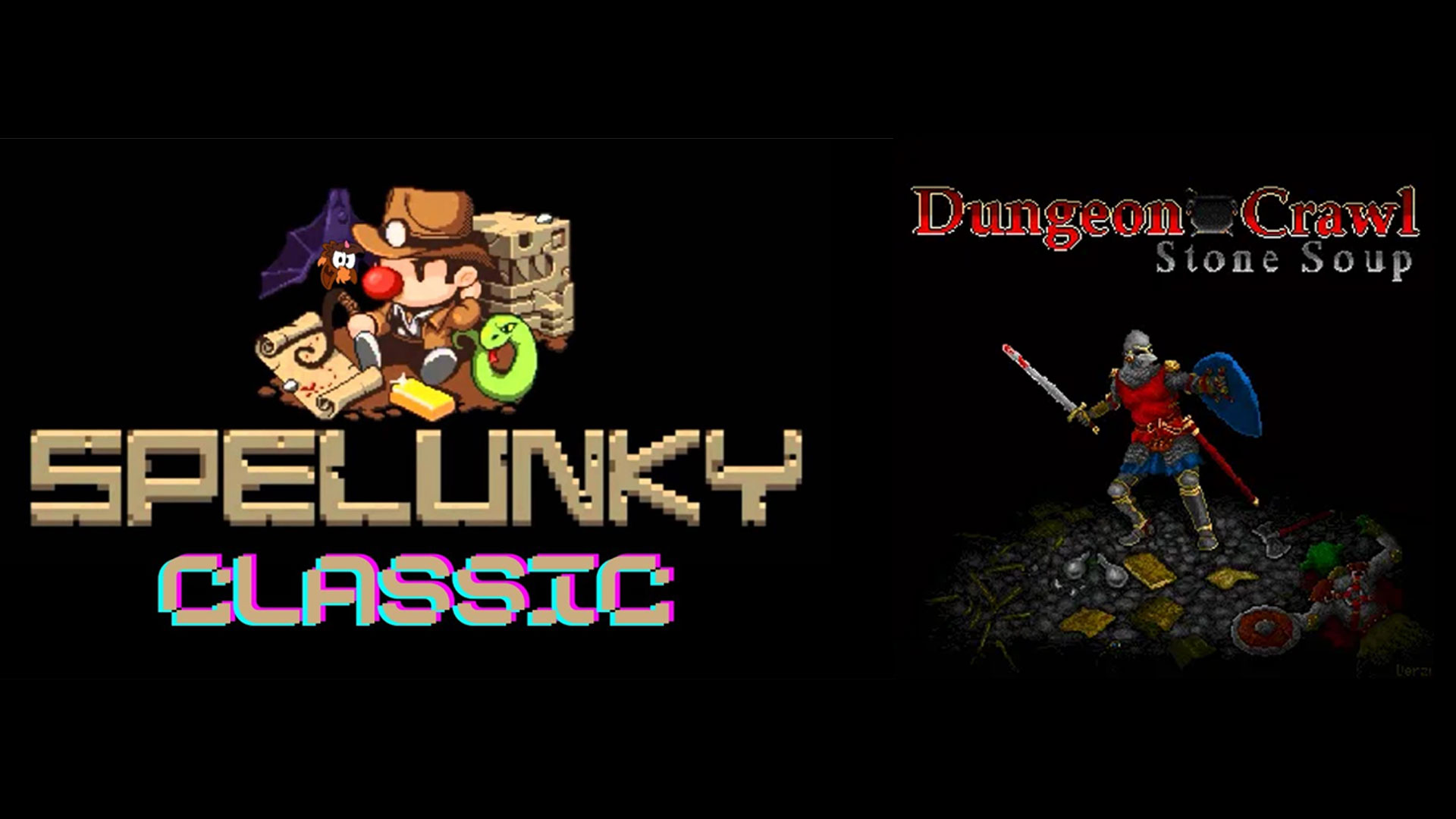
Spelunky Classic came out when I was just graduating high school (2009), and really opened my eyes to the now common idea of adding roguelike elements to other game genres. It was also a rare example, at the time, of an indie game that was polished, fun, and free. Throughout college my colleague (and also Nuke Nine co-founder) Kyle and I played Spelunky Classic countless hours, even trying our hand at speedrunning. Some parts of Vagante inspired by Spelunky include the player platforming mechanics, the angry shopkeepers, and the existence of intermissions between each floor.
Some parts of DCSS and Spelunky were considered in Vagante, but ultimately excluded. For example, we experimented with having a hunger clock like in DCSS, as well as a ghost timer similar to Spelunky, but neither mechanic was a good fit for the pacing in Vagante. We wanted players to be able to take their time and deliberately choose how to tackle their next obstacle, something that’s always possible in turn-based roguelike, but the inclusion of a timer pressured players to rush and experiment less. We also leaned into a more specialized class and background system, to allow players to have completely different playthroughs based on whether they’re an Ascetic Mage or an Illiterate Houndmaster.
The Universe of Vagante
Vagante presents a world full of unexplored and mysterious areas, wandering adventurers seeking to chart out new zones and investigate strange dungeons and dark ruins. Vagante’s hero is one such adventurer, joining a caravan to investigate the mystery behind a deep cave filled with monsters and treasure. Players of Vagante wouldn’t be surprised to know that two of the larger influences for the game’s setting include Diablo and the Castlevania series, both games that we enjoyed playing growing up. The dark mood and lighting was influenced by Diablo, while many of Vagante’s enemies take inspiration from the Castlevania bestiary. One of my favorite boss designs in Vagante is the Chimera, which is our take on Castlevania’s Manticore.

Finding a Balance. The Evolution of the Roguelike Mechanics
During the last few years, the roguelite genre has evolved, with many modern games having a stronger system of permanent progression, something that classic roguelikes lack. We wanted Vagante to be a consistent playing experience in between playthroughs like a roguelike, but we also wanted to add some aspects of replayability and modern progression. I think we hit the best of both worlds with our system of unlocking new classes and backgrounds to add variety to the game. Some games have systems in play where the game gets easier over time through permanent upgrades, but we wanted to avoid anything like that for a classic roguelike experience. Players’ skills remain the core of our game, rather than inherent progression factors such as power ups or skills you buy. Below you can see how the upgrades and inventory looked like in the first versions of the game.
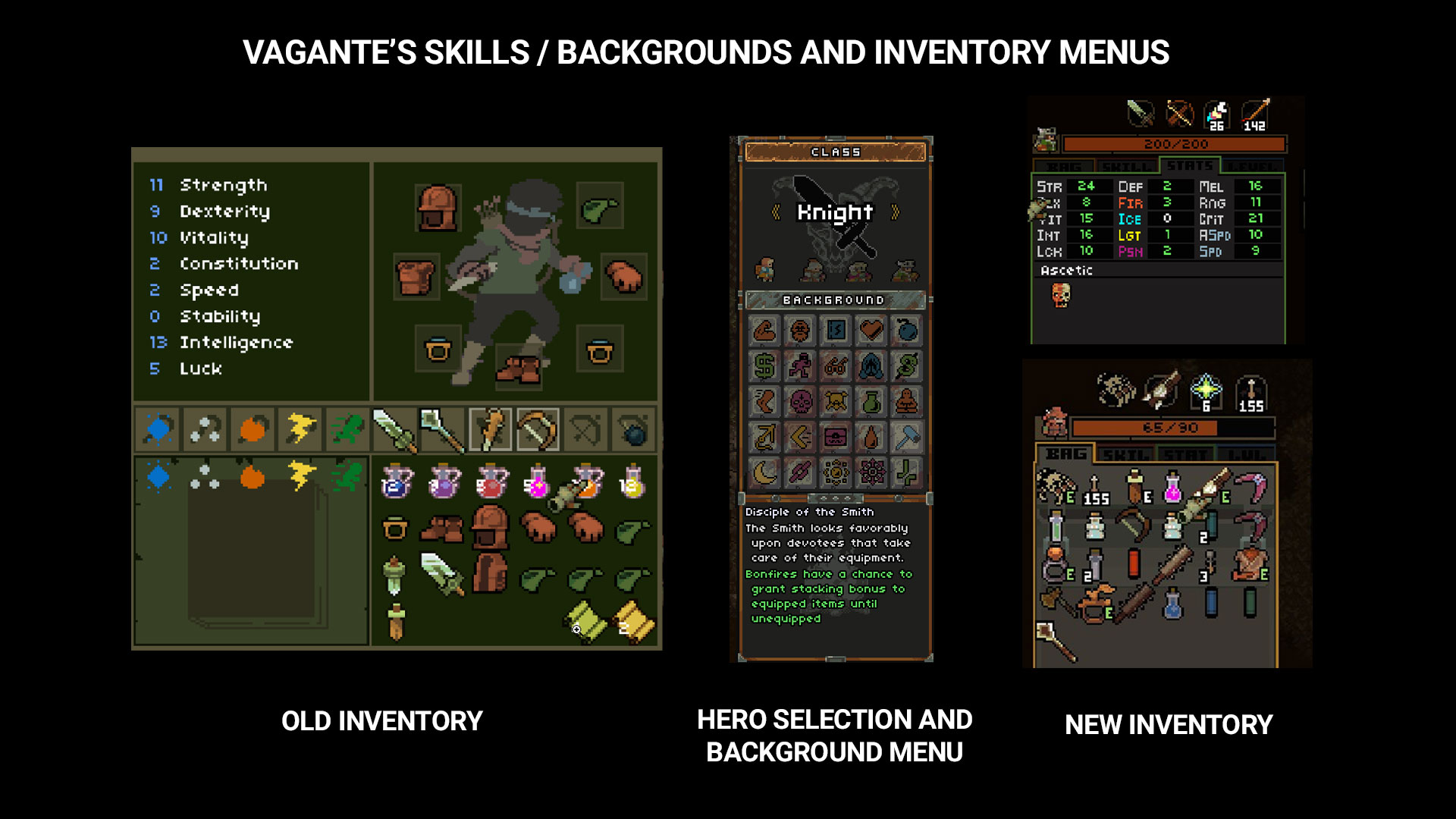
How the Backgrounds and the Progression System Works in Vagante
For each playthrough of Vagante, the player has a choice of a class as well as a background. Classes dictate the archetype of your character, while backgrounds are further specializations or modifiers to your character. For example, the Mage class could choose to start with the Heirloom background, granting them a magical ring passed down by their family. After each run, you accumulate a certain number of progression points which unlock new backgrounds or classes. In addition, some backgrounds can only be unlocked by completing certain feats in-game.
Even though nothing persists between each run, your experience changes due to your knowledge and skills improving over time. Each death is a chance to learn and get better at the game, which means whenever you triumph over the game you feel like you truly deserve it. We wanted Vagante to encapsulate this feeling, and while there’s some amount of randomness in the world, we did our best to minimize anything that’s truly unfair. I think the players that embrace the mentality of learning from mistakes tend to enjoy Vagante, since they’re rewarded with the knowledge that they’re becoming better players.
Are you up for the challenges of Vagante? Pick it up today on Xbox and find out! We hope you have a great time playing!

Vagante
BlitWorks
Related:
Tome 10: Saw Arrives to the Archives in Dead by Daylight
The Art and Design of Reverie Knights Tactics
Next Week on Xbox: January 24 to 28




